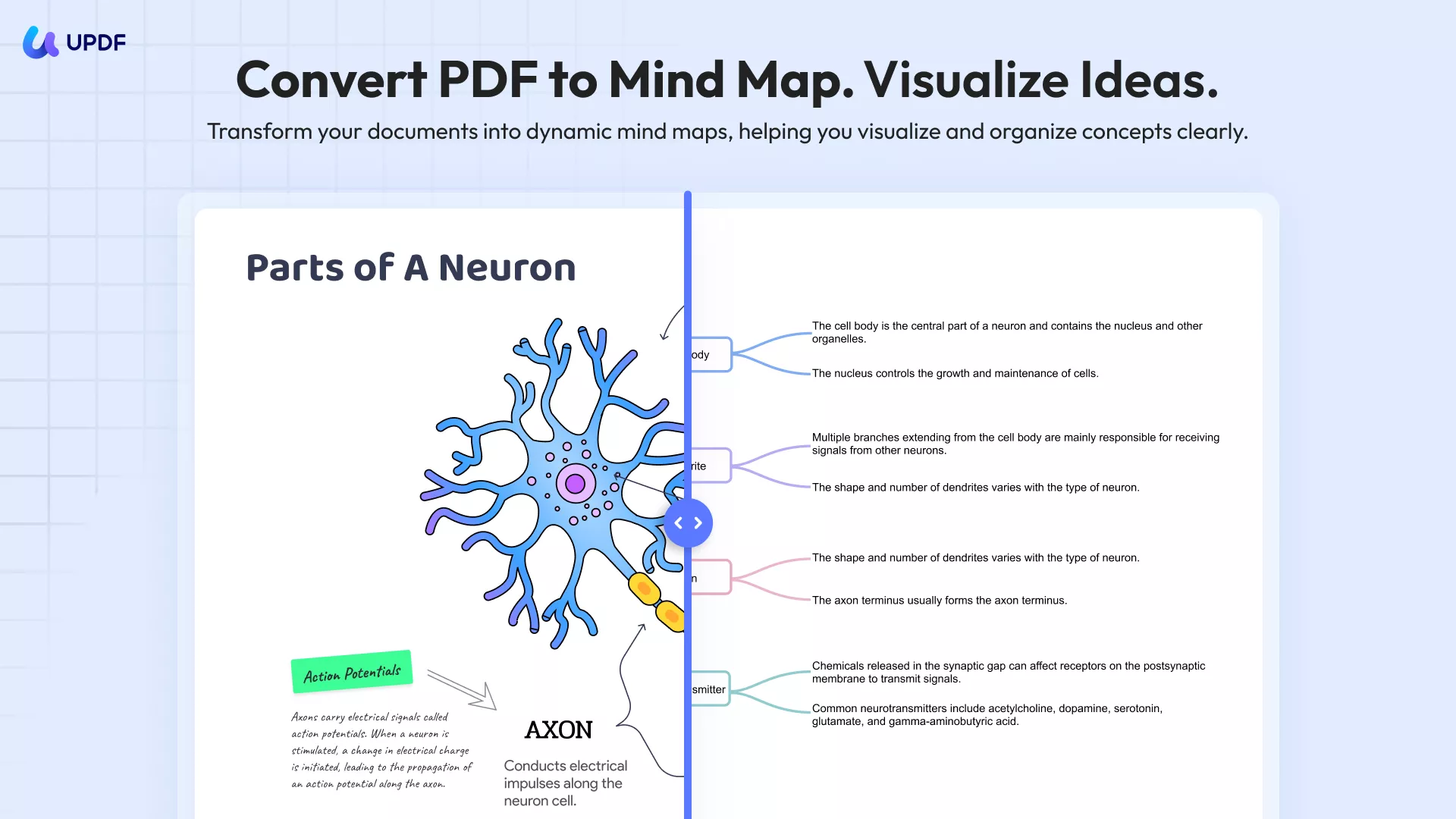UPDF AI Introduction
UPDF's AI assistant is an all-in-one assistant for PDFs, seamlessly integrated into the UPDF app across Windows, Mac, iOS, Android, and even available as a dedicated web version. This powerful AI tool streamlines your workflow by enabling advanced interactions, such as converting PDFs into mind maps, summarizing, translating, and explaining documents. It also allows you to chat with images using simple prompts to extract valuable insights.
Beyond PDFs, UPDF AI's Chat mode lets you discuss any topic, providing AI-driven assistance to help expedite your tasks, no matter what you're working on.

Advanced AI Models for a Smarter Experience
UPDF AI is powered by two large language models (LLMs):
- GPT-5 – The default model for both Ask PDF and Chat Mode, delivering advanced reasoning and highly accurate responses.
- DeepSeek R1 (Full-Size) – An alternative model available in Chat Mode, offering a different conversational experience.
Your Privacy is Fully Protected
When using DeepSeek R1, rest assured that our servers are located in the United States, ensuring that no user data or private information is leaked or transferred. Your privacy and security remain our top priority.
With a UPDF AI subscription, you can utilize your AI credits across all four major platforms—Windows, Mac, iOS, Android—and the web, ensuring access to all the features wherever you are.
Also Read:
- Best AI Prompts for Using UPDF AI >>
- Learn to Maximize UPDF AI with Our How-to Videos >>
 UPDF
UPDF
 UPDF for Windows
UPDF for Windows UPDF for Mac
UPDF for Mac UPDF for iPhone/iPad
UPDF for iPhone/iPad UPDF for Android
UPDF for Android UPDF AI Online
UPDF AI Online UPDF Sign
UPDF Sign Edit PDF
Edit PDF Annotate PDF
Annotate PDF Create PDF
Create PDF PDF Form
PDF Form Edit links
Edit links Convert PDF
Convert PDF OCR
OCR PDF to Word
PDF to Word PDF to Image
PDF to Image PDF to Excel
PDF to Excel Organize PDF
Organize PDF Merge PDF
Merge PDF Split PDF
Split PDF Crop PDF
Crop PDF Rotate PDF
Rotate PDF Protect PDF
Protect PDF Sign PDF
Sign PDF Redact PDF
Redact PDF Sanitize PDF
Sanitize PDF Remove Security
Remove Security Read PDF
Read PDF UPDF Cloud
UPDF Cloud Compress PDF
Compress PDF Print PDF
Print PDF Batch Process
Batch Process About UPDF AI
About UPDF AI UPDF AI Solutions
UPDF AI Solutions AI User Guide
AI User Guide FAQ about UPDF AI
FAQ about UPDF AI Summarize PDF
Summarize PDF Translate PDF
Translate PDF Chat with PDF
Chat with PDF Chat with AI
Chat with AI Chat with image
Chat with image PDF to Mind Map
PDF to Mind Map Explain PDF
Explain PDF Scholar Research
Scholar Research Paper Search
Paper Search AI Proofreader
AI Proofreader AI Writer
AI Writer AI Homework Helper
AI Homework Helper AI Quiz Generator
AI Quiz Generator AI Math Solver
AI Math Solver PDF to Word
PDF to Word PDF to Excel
PDF to Excel PDF to PowerPoint
PDF to PowerPoint User Guide
User Guide UPDF Tricks
UPDF Tricks FAQs
FAQs UPDF Reviews
UPDF Reviews Download Center
Download Center Blog
Blog Newsroom
Newsroom Tech Spec
Tech Spec Updates
Updates UPDF vs. Adobe Acrobat
UPDF vs. Adobe Acrobat UPDF vs. Foxit
UPDF vs. Foxit UPDF vs. PDF Expert
UPDF vs. PDF Expert